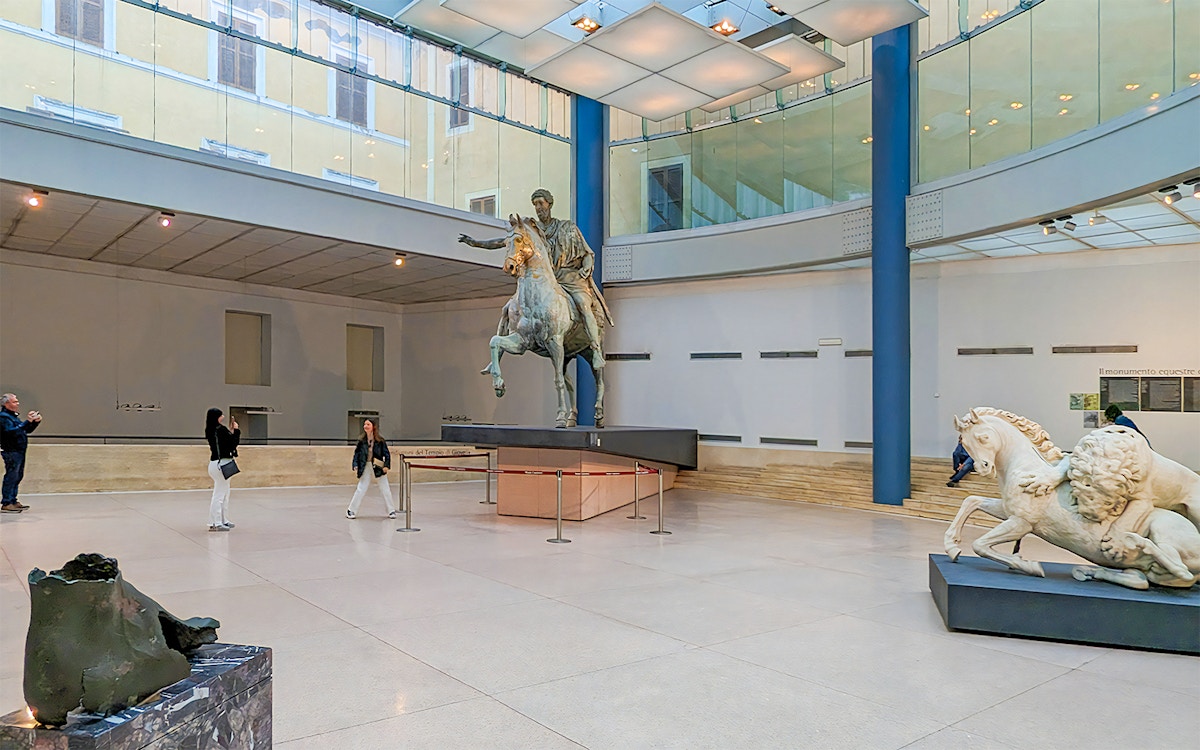Adjacent to the Palazzo Senatorio, the Palazzo dei Conservatori showcases a collection of ancient Roman artifacts. Originally constructed for the city magistrates, Michelangelo transformed its façade in the 1530s, incorporating colossal pilasters and a grand portico. This building serves as a vibrant hub for art and history, with highlights like the Capitoline Wolf.
Notable artifacts and highlights
Marcus Aurelius
The statue of Marcus Aurelius is an equestrian bronze honoring the Roman emperor renowned for his philosophical wisdom and stoic values. The statue gives off a sense of power and authority, with the emperor appearing larger than life. His outstretched hand mimics the gesture emperors used when speaking to their troops, adding to the commanding presence.
Lupa Capitolina
The Capitoline She-Wolf is a bronze statue housed in the Capitoline Museums in Rome. While it was long believed to be an Etruscan work, recent analysis of the casting technique suggests it may be of a later date. The sculpture portrays a she-wolf nurturing the legendary twin brothers, Romulus and Remus, who are credited with founding Rome.
Spinario
The Spinario is a small bronze statue that shows a young boy pulling a thorn from his foot. It arrived at the Capitoline Museums in 1471 as part of a donation by Pope Sixtus IV. Likely created in the 1st century BC, the sculpture blends earlier Hellenistic and Greek influences. During the Renaissance, it was one of the most admired and frequently copied ancient pieces.
Lion attacking a horse
The Lion attacking a horse statue is a marble sculpture from the Hellenistic era, displayed at the Capitoline Museums in Rome. It captures a dramatic struggle between a lion and a horse, showcasing intense emotion and dynamic movement. The piece has been on Capitoline Hill since at least the early 14th century.
Capitoline Venus
Discovered between 1666 and 1670 near the Basilica of San Vitale, this sculpture stands slightly larger than life. Crafted from exquisite marble, likely sourced from Paros, it portrays Venus looking a bit lost and empty as she exits her bath.
Dying Gaul
The Dying Gaul, also known as The Dying Galatian or The Dying Gladiator, is an ancient Roman marble statue that depicts a semi-reclining figure. This piece is a replica of a lost Greek sculpture from the Hellenistic era (323–31 BC), which is believed to have originally been crafted in bronze.
Cupid and Psyche
Located in the Capitoline Museums in Rome, the statue of Cupid and Psyche is a 1st or 2nd-century replica inspired by an earlier late Hellenistic original. Donated by Pope Benedict XIV after its discovery in 1749, it beautifully depicts the lovers entwined in a tender embrace.

